Unit Test (Solutions): Pressure, Winds, Storms, and Cyclones | Science Curiosity Class 8 - New NCERT PDF Download
Time: 1 hour
M.M. 30
Attempt all questions.
- Question numbers 1 to 5 carry 1 mark each.
- Question numbers 6 to 8 carry 2 marks each.
- Question numbers 9 to 11 carry 3 marks each.
- Question number 12 & 13 carry 5 marks each.
- 1-mark questions include MCQs.
Q1: Pressure is defined as (1 Mark)
(i) force × area
(ii) force ÷ area
(iii) area ÷ force
(iv) mass × acceleration
Ans: (ii)
Pressure = Force/Area; it quantifies how much force acts per unit area. This aligns with why narrow straps hurt more (same force over smaller area = higher pressure).
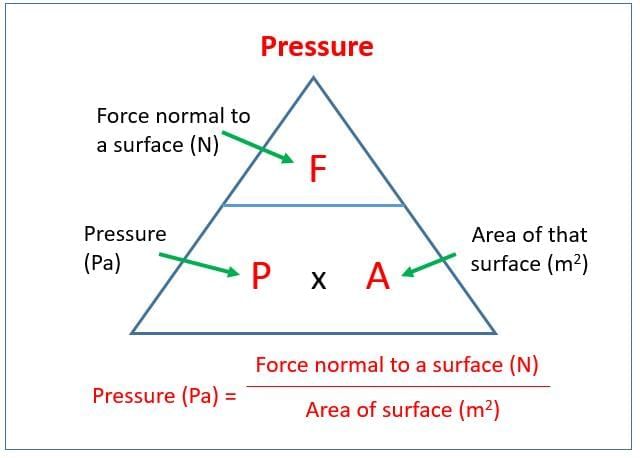
Q2: The SI unit of pressure is (1 Mark)
(i) N
(ii) m2
(iii) N/m2 (pascal)
(iv) kg
Ans: (iii)
Pressure’s SI unit is newton per square metre (N/m2), also called pascal (Pa). For atmospheric work, millibar (mb) or hectopascal (hPa) is often used in practice.
Q3: Liquids exert pressure (1 Mark)
(i) only at the bottom of the container
(ii) only at the surface
(iii) on the bottom and the walls, in all directions
(iv) not at all
Ans: (iii)
Liquids exert pressure on all surfaces they are in contact with — the bottom, the walls, and even in all directions inside the liquid. This happens because liquid molecules are free to move and transmit pressure equally in all directions (Pascal’s law). That’s why, for example, water in a tank pushes outward on the walls as well as downward on the base.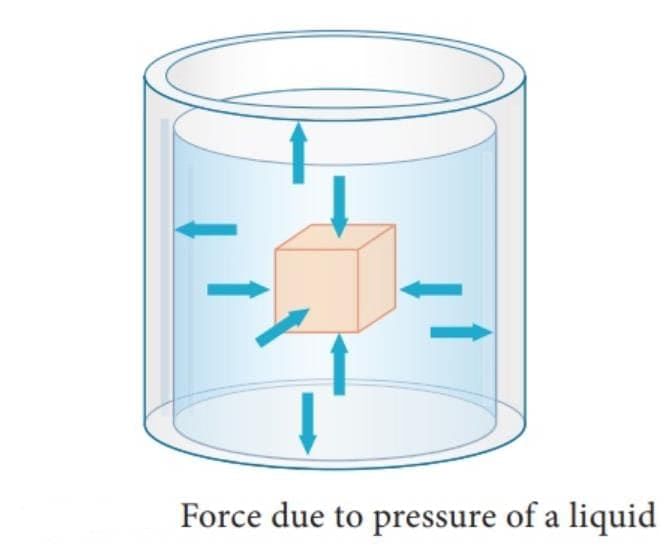
Q4: Air moves from a region of (1 Mark)
(i) lower pressure to higher pressure
(ii) higher pressure to lower pressure
(iii) equal pressure to equal pressure
(iv) calm to windy region
Ans: (ii)
Air always moves from a region of higher pressure to a region of lower pressure in an attempt to balance the pressure difference. This movement of air is what we feel as wind. The greater the pressure difference, the faster the air moves.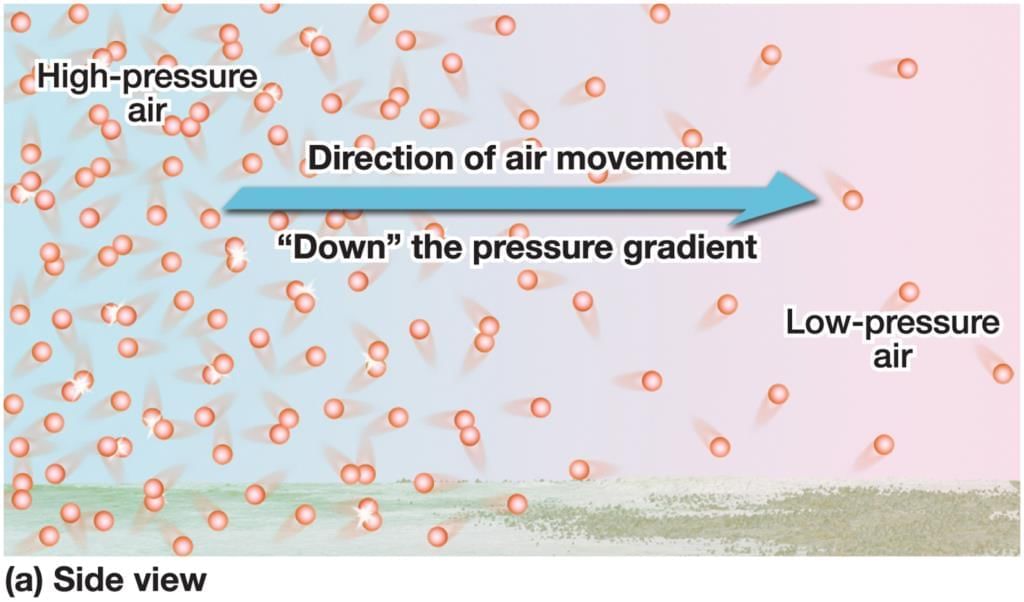
Q5: High-speed winds are accompanied by (1 Mark)
(i) higher pressure
(ii) lower pressure
(iii) no pressure change
(iv) only temperature change
Ans: (ii)
Blowing air between two hanging balloons lowers pressure between them so they move together; in storms, fast winds lower pressure over roofs, risking uplift.
Q6: Why are overhead water tanks placed at a height? (2 Marks)
Ans: Pressure at an outlet depends on the height (head) of the water column above it; greater height means greater liquid pressure at taps, yielding a stronger flow on lower floors. Hence tanks are elevated to provide usable pressure without pumps.
Q7: Two vertical pipes of different diameters are connected to identical balloons at the bottom and filled to the same water height. Both balloons bulge equally. Explain. (2 Marks)
Ans: Pressure at a given depth in a liquid depends only on the height of the liquid column (and liquid density), not on the cross-sectional area. Equal heights give equal pressure on both balloons, causing equal bulging despite different volumes of water above.
Q8: A rubber sucker sticks to a smooth tile but not to a rough wall. Why? (2 Marks)
Ans: Pressing a sucker expels air beneath, creating lower pressure inside; higher outside atmospheric pressure holds it in place. On a smooth surface, a seal forms and pressure difference is maintained. On a rough surface, gaps leak air, preventing a seal and thus no sticking.
Q9: State two observations/activities that show air exerts pressure in all directions. (3 Marks)
Ans: Two observations/activities that show air exerts pressure in all directions are:
Inflating a balloon: When air is blown into a balloon, it expands equally in all directions. This happens because the air inside pushes outward on all sides of the balloon, showing that air exerts pressure in every direction.
Paper-plate and chart paper activity: If a paper plate is covered with a large sheet of chart paper and lifted, it becomes difficult to pull up because the atmospheric pressure acts downward over the entire surface area. A larger area means a greater total force due to air pressure.
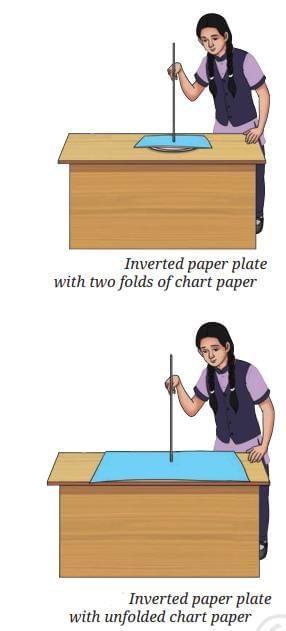
Conclusion: These activities prove that atmospheric pressure is not just downward but acts in all directions around objects.
Q10: Describe how high-speed winds can blow off roofs and a safety measure to reduce this risk. (3 Marks)
Ans: Fast winds over a roof reduce pressure above it relative to inside the house. The higher internal pressure pushes upward on the roof; if the pressure difference is large and the roof is weak, it can lift off. Keeping some doors/windows open during a severe storm allows air to flow, reducing pressure difference across the roof and lowering uplift risk.
Q11: Differentiate between a thunderstorm and a cyclone on the basis of formation and scale. (3 Marks)
Ans:
- Thunderstorm: Forms from warm, moist air rising rapidly; strong updrafts/downdrafts, charge separation in clouds causing lightning and thunder; typically local and short-lived.
- Cyclone: Forms over warm oceans; rising moist air and latent heat release create sustained low pressure; Earth’s rotation imparts spin; features an “eye”, very strong winds, heavy rain; impacts a large region over days.
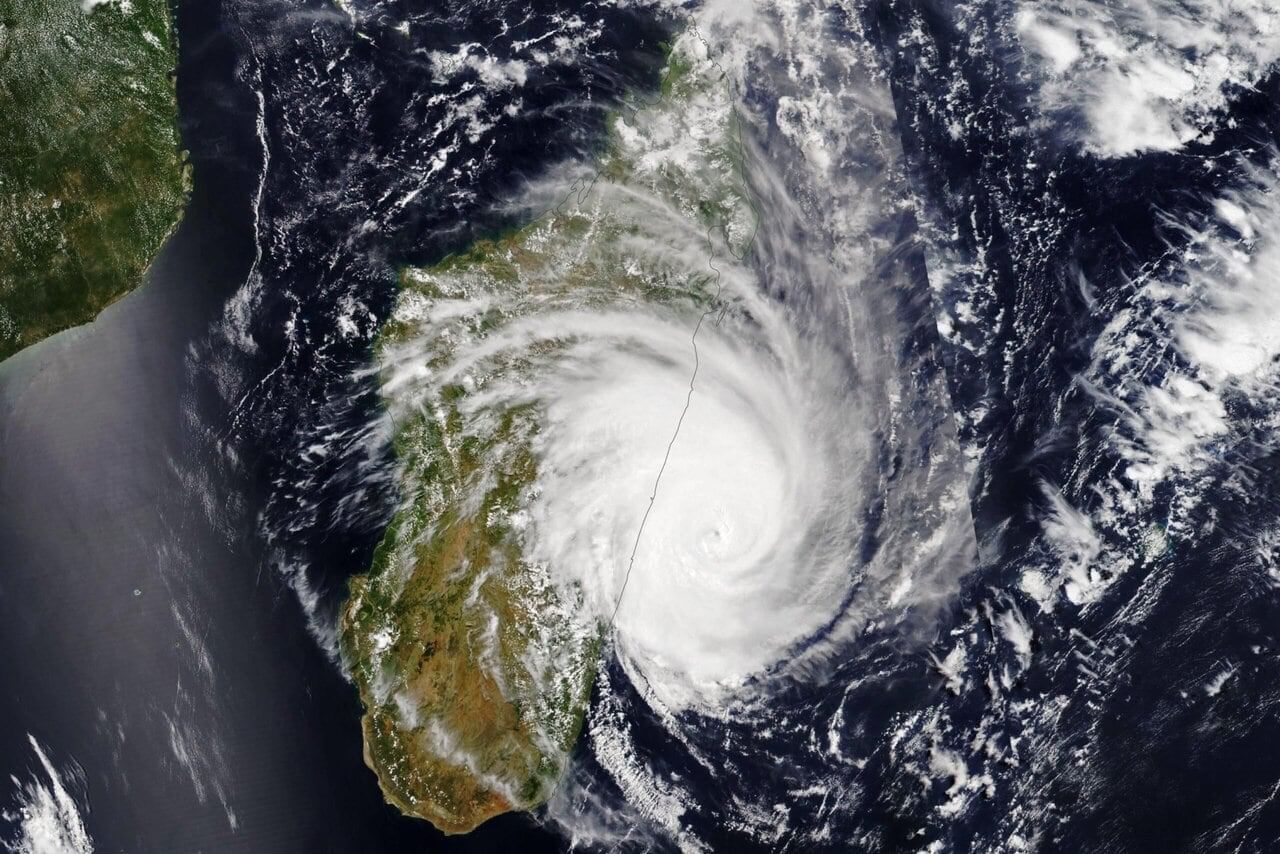
Q12: (a) Explain with examples how “pressure = force/area” guides tool design and load carrying.
(b) A 225 N force acts uniformly on a 0.015 m2 area. Compute the pressure.
(c) In below figure (communicating vessels), water is poured into vessel R connected to P and Q; once flow stops, which vessel shows the highest level? Justify. (5 Marks)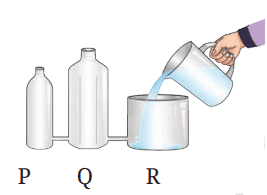
Ans:
(a) Narrow tips concentrate force on small area to raise pressure—nail points and knife edges cut/penetrate easily. Broad straps/handles spread force over larger area to lower pressure—bag straps, bucket handles, and head pads for loads increase comfort and prevent injury.
(b) P = F/A = 225 N / 0.015 m2 = 15,000 N/m2 = 15 kPa. This illustrates how small contact areas create substantial pressures from modest forces.
(c) Equal communicating vessels share the same fluid; at equilibrium, the liquid surface must be at the same level in all connected branches because pressure at a common depth must be equal. Therefore, final levels in P, Q, and R are equal.
Q13: (a) Describe the sequence from warm, moist air near the surface to a thunderstorm with lightning.
(b) How can a storm intensify into a cyclone over the ocean?
(c) List three cyclone safety actions for coastal communities. (5 Marks)
Ans:
(a) Daytime heating warms moist air, which becomes lighter and rises, creating low pressure. Rising air expands and cools; moisture condenses into clouds and raindrops. Strong updrafts/downdrafts cause collisions and rubbing among water droplets and ice, building static charges—upper cloud becomes positively charged, lower cloud negative. When charge separation exceeds air’s insulating capacity, a sudden discharge occurs—lightning—superheating air and producing thunder; strong winds and rain define the thunderstorm.
(b) Over warm oceans, continuous evaporation and condensation release latent heat, further warming ascending air and deepening the low pressure. Surrounding air spirals inward due to pressure gradient and Earth’s rotation, organizing a large vortex with an eye; sustained moisture supply and heat release strengthen winds—evolving a storm into a cyclone. On land, lack of warm, moist air weakens it.
(c) Actions: Monitor IMD alerts and evacuation notices; move to designated cyclone shelters or higher ground; prepare emergency kits (water, food, torch, medicines, radio, power bank); secure loose items and turn off electricity/gas; avoid floodwaters and downed power lines.
|
59 videos|236 docs|13 tests
|
FAQs on Unit Test (Solutions): Pressure, Winds, Storms, and Cyclones - Science Curiosity Class 8 - New NCERT
| 1. What is the relationship between air pressure and weather patterns? |  |
| 2. How do winds form and what factors influence their direction and speed? |  |
| 3. What are the different types of storms and how do they differ from one another? |  |
| 4. What is a cyclone and how does it form? |  |
| 5. How do meteorologists predict storms and assess their potential impact? |  |
















